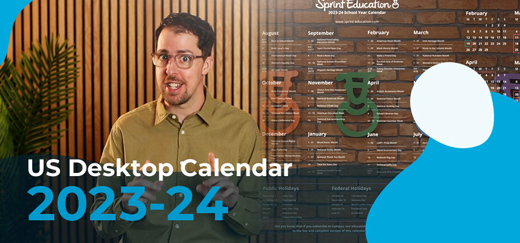How budgets impact schools' buying behaviour: inform your marketing
How budgets impact schools' buying behaviour: inform your marketing
More than 95% of school leaders consider the budget when devising their school’s strategy.
More than 95% of school leaders consider the budget when devising their school’s strategy.
If you’ve read any of our recent blogs exploring the intersection of technology and teaching, you’ll know that school budgets are the root of all good and evil in the age of austerity.
With state schools focusing restricted resources on delivering better results in compulsory subjects, it seems any given programme’s funding is proportional to the advantage it gives pupils in preparing for the labour market.
Plain and simple this means that anything that doesn’t support compulsory curricular activities isn’t a top spending priority.
This could be good or bad news depending on where your business falls on the spectrum of schools’ needs.
Whatever you’re selling to schools, inform your next marketing campaign with some additional analysis – here are a few insights we gleaned from Promethean’s “The State of Technology in Education” report on how to compete under austerity.
Budgets are tight, that much is obvious, but how does that affect schools’ strategies?
Consistent with the over two-thirds of leaders that cite budgets as a key factor in devising their schools’ strategies are the over 88% of SMTs that state budgetary constraints will make it at least somewhat difficult to achieve these strategic objectives in the coming year.
Not even 3% of SMTs stated that budgets played little to no part (2.9%) in the creation of their strategies. Indicating that they are either unburdened by fiscal responsibility or perhaps weren’t paying attention.
As budgets play such a massive roll in determining strategy, it follows that most school leaders (71.7%) acknowledge budgets as having the largest impact on student education. However, this figure had declined from 86.4% three years ago.
This impact on student education can be seen in the small number of (20.3%) teachers that believe enough is spent on training compared to the nearly half of senior leaders (49.4%) that say the same thing. A significant difference in opinion that leaves teachers feeling as though they lack support and students missing out on new developments in pedagogy.
Trends and opportunities identified:
- Schools’ strategies and priorities are budget-driven – understand where your product or service falls in schools’ spending priorities to determine what objections and competition you have to overcome to secure schools’ business.
- Teachers are often last to contribute to the strategy but the first to be effected – when marketing to schools, be aware of your audience, be sensitive to their position, and understand their decision-making power.
What do budgetary constraints mean for IT in schools?
School leaders are quickly coming to terms with the potential tech has to improve student learning.
The number of school leaders that anticipate edtech as having a significant impact on education has doubled in the previous year from 17.6% to an all-time high of 40.9% for 2020.
This acceptance of technology is reflected in the ever-increasing allocation of schools’ budgets for tech with three times more SMTs reporting that technology will account for their largest spend this year as opposed to last.
15.5% of the schools that responded to this survey indicated that they would be spending more on tech than they will on salaries, operations and maintenance, or additional learning support in the coming year – typically the three largest allocations of school budgets.
Almost all groups canvassed report that technology should receive a larger allocation, but they also all agree that there’s not enough money. So the logical next step is determining how to spend what they do have.
Trends and opportunities identified:
- Most schools have IT managers that think progressively and are keen to implement new technology in their schools – if you’re selling edtech to schools, IT managers are your closest allies and strongest proponents. Arm them with the information and materials they need to advocate for your products and services to the decision-makers in SMTs.
- Technology is now schools’ fourth-highest spending priority – schools making edtech a priority will want assurances that new tech is compatible with their existing infrastructure and that the products or services they’re purchasing have longevity. Be sure to highlight compatibility, support, and service plans in marketing communications.
Here's how budgetary constraints are impacting school’s buying behaviour:
Much like when the body experiences a loss in blood supply, and the heart redirects blood flow to vital organs, when schools experience a loss in funding, SMTs must reallocate the budget to areas of the school associated with core curricular activities.
In the human body, this results in reduced blood flow to your extremities. In schools, it means non-compulsory programmes experience a shortfall in funding.
What this doesn’t mean: The extremities of schools, or the human body, cease to function or fall off altogether (fingers crossed).
What it does mean: Schools have become more prudent and efficient with their allocation of funds, something businesses will need to take into consideration.
If you’re in the business of providing products and services to schools’ vital organs, those being operations and maintenance or additional learning support, then you’re in the top tier of schools’ spending priorities after paying salaries.
Businesses that provide non-essential products and services, however, will need to make their marketing work a bit harder and more efficiently. Not only are these businesses competing amongst themselves, but they are also competing against the other limbs of the school fighting for an allocation of the school’s budget not earmarked for vital spending priorities.
So here’s what you need to do.
Communicate these two key messages when marketing to schools to overcome budgetary constraints:
- What efficiencies you’ll create for them over your competitors.
- Why SMTs should direct resources away from other thinly funded areas of the school and toward your product or service.
Reference:
- The State of Technology in Education. (2019). [online] Promethean World. Available at: https://resourced.prometheanworld.com/technology-education-industry-report/#schools-strategic-goals [Accessed 22 Nov. 2019].
Tags
Education Marketing
Similar Articles


The Theory of Segmentation
Why teachers will respond better if you’re putting the theory into practice.


VIDEO: Selling to Schools during the Cost of Living Crisis
Watch episode one of our new video series, in which we unpack how the cost of living crisis affects teaching, learning, and school spending.


Expert marketing to K-12 support and solutions
Expert marketing to K-12 solutions
Email Principals, Teachers, and District Staff Inboxes
Email teachers and staff inboxes
Sell More to US and Global Schools and Districts
Sell more to schools and districts
































